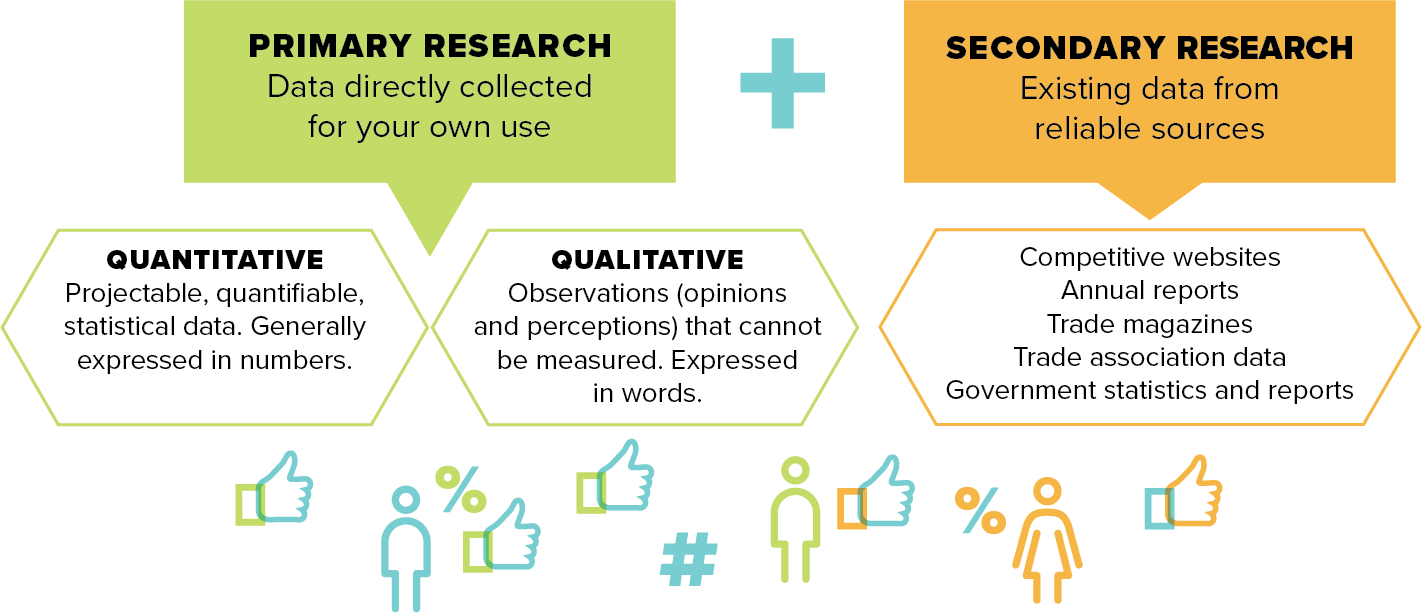Deardorff
What is the state of research today? Are most companies investing in a deeper analysis of their products, brands and go-to-market strategies?
Donna MacFarland
I’d say yes, they are. In my experience, most firms see the value of understanding their customers’ wants and pain points and putting those insights to work – especially now. When the markets are up and the economy’s good like it is now, companies don’t hesitate to spend on research. But it’s the smart companies that really understand the need to keep your foot on the pedal during the downtimes, because research can be a competitive differentiator. It can help you determine where to most effectively spend your marketing dollars and keep you from making haphazard decisions. And who wouldn’t want a competitive edge?
Deardorff
What kind of research do you think is essential for every firm?
Donna MacFarland
I would say at a minimum, companies need to assess customer satisfaction, customer loyalty and brand image. You really need to figure out how well you’re serving customers. And you know the old adage – it’s easier to retain a customer than to attract a new one, right? And, of course, client satisfaction leads to loyalty, it’s a continuum, so you need to study that.
As far as brand image is concerned, unfortunately many companies don’t look at that, but it’s important to understand who you are, what you’re offering, and if your company is aligning to that brand. At the end of the day, your brand is determined by your customers and prospects. As much as you want to define your company, the external audience will define it for you. So you have to figure out, are you aligning to those expectations?
Deardorff
What are the range of research techniques available and when would you use them?
Donna MacFarland
Well, at the highest level, there’s primary and secondary research. Secondary research involves studying existing information, such as marketplace data or competitive materials. Proprietary primary research is research you fund, while syndicated primary research is cosponsored. Proprietary primary research requires a greater investment, but it’s highly customized to your organization, yields deeper information, and comes in qualitative and quantitative forms.
While both types of research aim to capture knowledge, quantitative research is numeric and objective. It provides solid data, such as “X percent of clients are likely to purchase.” If you’re looking to do segmentation analysis, for example, you need to do quantitative research, which is generally conducted through online surveys.
Qualitative research lets you go deeper. You use it when you want to understand perceptions and opinions – why are clients planning to purchase or not purchase? In most cases, a moderator will conduct personal interviews with one or more individuals (dyads, triads or full focus groups), and these are done by phone, WebEx and in person.

Deardorff
What types of misconceptions do you encounter around the use of qualitative or quantitative research?
Donna MacFarland
I think the main thing is when companies think that qualitative research can be a substitute for quantitative research. There is a viewpoint that qualitative is a quick fix, that focus groups are an easy answer. And it’s true that qualitative research is generally quicker and less expensive than quantitative, but it’s only going to get you so far. If you need projectable, statistical data, qualitative research isn’t enough.

Deardorff
Research can be invaluable in testing messaging and positioning for going to market. Can you give us an example of that?
Donna MacFarland
Sure. We worked with a financial services company that was trying to align multiple audiences under one brand and one messaging platform. No easy task. So we developed value propositions and positioning statements for each audience, and then brought the audiences in for testing. We used a dial technology where some audiences adjusted the dial up or down to indicate what elements and phrases in the copy they liked. We were able to determine where the commonality was, and this allowed us to develop one overall platform.
Deardorff
And if they hadn’t done the research?
Donna MacFarland
I think they could have easily gone to market with a message that didn’t align with their brand among the various audiences or didn’t resonate as well as it did.

Deardorff
Have you ever conducted research that produced a real surprise?
Donna MacFarland
Yes! We were doing research on an annuity launch. The product team assumed they were entering the one existing market space. But when we interviewed financial advisors as part of our research, they consistently talked about another approach they were using, something the company had never even considered, or thought possible. I remember that being an aha moment. Through research, we created a new positioning and a whole new approach to messaging the product that no competitor was doing. It’s a great example of why you need to listen to the marketplace.
Deardorff
What should a firm look for in a research partner?
Donna MacFarland
Category experience may be beneficial, but it’s not always critical or necessary. I think you want a firm that communicates well and collaborates with you because ideas go both ways. Project management skills and keeping things on track are critical. And more than ever today, you need a research partner that can assure the security of your data.
Once you’re working together, I can’t stress enough the importance of making sure everyone on the research team and the business partners agree on the key objectives, and that they let the research team figure out the best methodology.
Deardorff
What is your advice for companies that may avoid conducting research because of the cost or the timing?
Donna MacFarland
Well, you can look at research as a cost center, or you could look at it as a rainmaking center. Is the glass half-full or half-empty? We look at it as half-full because research can help you refine, define and iterate your go-to-market strategy so that you are optimizing your spend and maximizing your growth – just from the insights you glean from the research. Some companies may say, we’re growing just fine. But it’s possible that if they had these new insights, they’d be growing faster and at higher rates.
As far as timing, I know some businesses may feel that there just isn’t time for research. There’s often a need to get to market quickly. But what about the time lost when you plow ahead, and then have to redo or rethink something because it’s not working?
Deardorff
This has been great, Donna. Any final thoughts for our readers?
Donna MacFarland
I’d just say, be open to learning. Be receptive to listening to the customer’s perspective, even when it’s not what you want to hear. Things happen in the marketplace. Companies can become very myopic and feel that they already know what the customer thinks, but there’s always an opportunity to learn, and research is the best way to do that.






